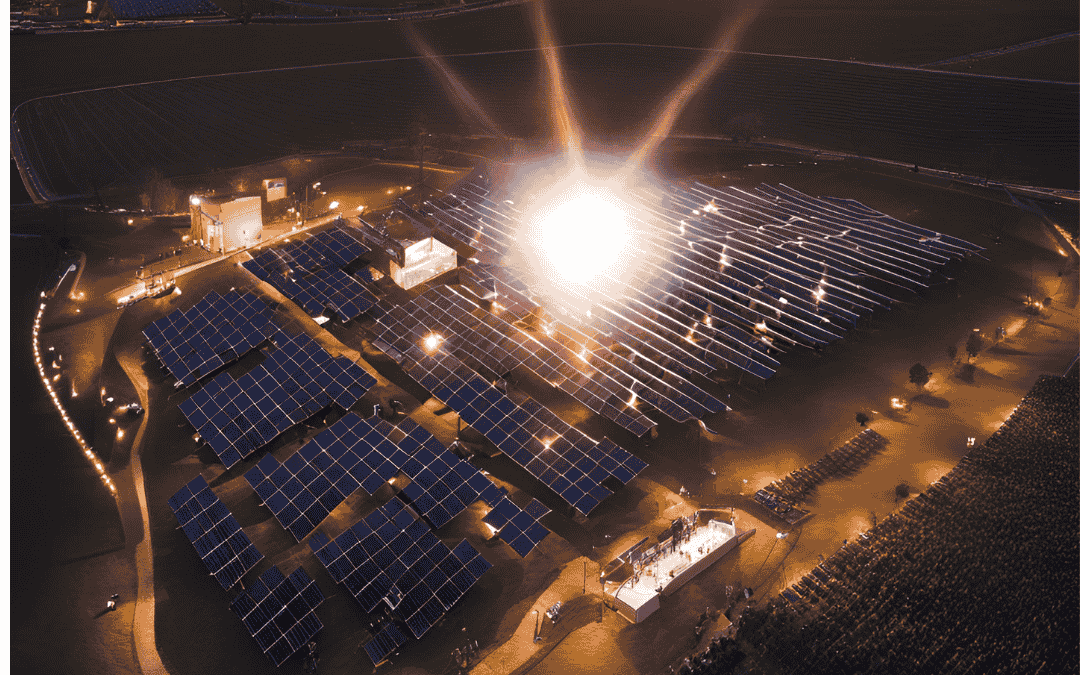A Focus on Live Sound Production
In an era where environmental concerns are at the forefront of global conversations, every industry is reevaluating its practices to prioritize sustainability. The audio engineering industry, particularly the live sound production sector, is no exception. With live concerts, festivals, and events generating significant carbon footprints, there’s a growing need for innovative, eco-friendly approaches to mitigate environmental impact. This blog delves into sustainable practices in live sound production, highlighting strategies, technologies, and the role of audio professionals in fostering a greener future.
The Environmental Impact of Live Sound Production
Live sound production is an energy-intensive endeavor. From the electricity required to power massive sound systems to the transportation of equipment and personnel, live events often leave behind a considerable environmental footprint. Key contributors include:
- Energy Consumption: Large-scale events demand high-power amplifiers, speakers, and lighting systems. Traditionally, these systems rely on non-renewable energy sources, contributing to greenhouse gas emissions.
- Transportation: Touring bands and production crews often travel long distances, utilizing fuel-intensive vehicles such as trucks, buses, and planes to move equipment and personnel.
- Single-Use Materials: Disposable batteries, packaging for equipment, and plastic cable ties contribute to significant waste generation.
- Electronic Waste: Aging equipment and components are often discarded improperly, leading to e-waste that pollutes the environment.
Why Sustainability Matters in Live Sound Production
The live sound industry plays a crucial role in shaping cultural experiences and inspiring audiences. By embracing sustainability, audio professionals can:
- Reduce Environmental Harm: Eco-conscious practices help minimize waste, conserve resources, and lower carbon emissions.
- Enhance Brand Reputation: Artists, venues, and production companies that prioritize sustainability often attract eco-minded audiences and clients.
- Drive Industry Innovation: The push for sustainable solutions encourages the development of energy-efficient technologies and eco-friendly materials.
- Meet Regulatory Demands: Governments and local authorities are increasingly enforcing environmental regulations that impact live events. Staying ahead of these requirements is both practical and responsible.
Sustainable Strategies in Live Sound Production
Adopting sustainability in live sound production requires a multifaceted approach, encompassing energy efficiency, waste reduction, and collaboration. Below are practical strategies for making live sound production greener:
1. Energy-Efficient Equipment
Transition to Low-Power Systems
Modern audio equipment manufacturers are developing energy-efficient systems without compromising performance. Class-D amplifiers, for example, are highly efficient, converting a larger percentage of electrical energy into sound while reducing heat waste.
LED Lighting Integration
While not directly related to sound, lighting is a significant part of live productions. Switching to LED lighting dramatically reduces energy consumption, lessening the overall carbon footprint of an event.
Renewable Energy Sources
Some venues and festivals are experimenting with renewable energy solutions, such as solar panels or wind turbines, to power sound systems. These innovations drastically reduce reliance on fossil fuels.
2. Green Transportation
Streamlined Logistics
Carefully planning the transportation of equipment and personnel can reduce unnecessary trips. Consolidating shipments and choosing fuel-efficient vehicles can significantly cut emissions.
Carbon Offsetting for Tours
For unavoidable emissions, many artists and production companies are investing in carbon offset programs. These initiatives fund projects like reforestation or renewable energy development to neutralize carbon output.
Local Sourcing of Equipment
Rather than transporting gear across long distances, production companies can partner with local providers for sound and lighting equipment. This approach minimizes the environmental impact of shipping.
3. Sustainable Event Design
Recyclable and Reusable Materials
Event organizers can replace single-use items with durable, reusable alternatives. For example, rechargeable batteries for wireless microphones and in-ear monitors are a practical step toward reducing waste.
Eco-Friendly Packaging
Choosing biodegradable or recyclable packaging for cables, connectors, and other components can prevent plastic waste from ending up in landfills.
Efficient Stage Layouts
Smaller, more energy-efficient stage designs can maintain sound quality while using fewer resources. Additionally, placing speakers strategically can maximize sound coverage, reducing the need for additional equipment.
4. Responsible Waste Management
E-Waste Recycling Programs
Rather than discarding outdated or broken equipment, production companies can partner with certified e-waste recyclers to ensure proper disposal and recovery of valuable materials.
Donation and Repurposing
Functional but unused audio equipment can be donated to schools, community centers, or nonprofit organizations, extending its lifecycle and reducing waste.
On-Site Recycling Stations
Encouraging recycling at live events—by providing clearly labeled bins for batteries, plastic, and general waste—ensures that materials are disposed of responsibly.
5. Collaboration and Education
Partnering with Sustainable Organizations
Working alongside environmental organizations can help identify new opportunities for reducing an event’s environmental impact. Groups like A Greener Festival offer certifications for sustainable events, encouraging accountability.
Training and Awareness
Educating sound engineers, production teams, and artists about sustainable practices can drive long-term change. Workshops, webinars, and industry panels can spread knowledge and inspire action.
Advocacy by Artists
Artists wield significant influence over fans and industry stakeholders. When they prioritize sustainability—for example, by supporting green riders in their contracts—they can lead by example and amplify awareness.
Case Studies: Sustainability in Action
- Glastonbury Festival
One of the world’s most iconic music festivals, Glastonbury, has implemented extensive sustainability measures. From banning single-use plastics to using solar and pedal-powered stages, the festival is a leader in eco-conscious event production. - Coldplay’s Sustainable Tours
Coldplay’s Music of the Spheres tour embraced sustainability by using kinetic floors and energy-generating bikes to power parts of the concert. They also committed to planting a tree for every ticket sold. - PRG’s Green Practices
Production Resource Group (PRG), a global leader in event technology, has introduced energy-efficient equipment and eco-friendly materials into its rental inventory, setting an example for the industry.
The Role of Technology in Driving Sustainability
Technological advancements are integral to creating greener solutions in live sound production. Some innovations include:
- Virtual Event Tools: Virtual concerts and hybrid events reduce the need for travel, offering a more sustainable alternative to traditional live shows.
- Energy Monitoring Systems: Real-time energy tracking allows production teams to identify inefficiencies and optimize power usage during events.
- Biodegradable Audio Components: Research into eco-friendly materials, such as biodegradable plastics for cables and connectors, could transform the industry.
Overcoming Challenges to Sustainability
Despite the benefits, implementing sustainable practices in live sound production comes with challenges:
- Cost: Energy-efficient equipment and renewable energy solutions often have higher upfront costs. However, these investments can yield long-term savings and environmental benefits.
- Logistical Complexity: Coordinating sustainable initiatives, such as sourcing local equipment, requires additional planning and collaboration.
- Industry Resistance: Some professionals may be hesitant to adopt new practices, fearing disruptions to workflow or compromises in sound quality.
Addressing these challenges requires collective effort, driven by innovation, education, and a commitment to sustainability.
The Future of Sustainable Live Sound Production
As awareness grows, sustainability is poised to become a core value in the live sound industry. Emerging technologies, regulatory pressure, and shifting audience expectations will drive the adoption of greener practices. By taking action today, audio engineers, artists, and production teams can contribute to a more sustainable future for the music and entertainment industry.
Sustainability in live sound production is no longer optional—it’s a responsibility. By embracing energy-efficient technologies, reducing waste, and collaborating on eco-conscious initiatives, the audio engineering industry can play a vital role in combating climate change. Every event is an opportunity to innovate and inspire, proving that great sound and environmental stewardship can go hand in hand.
Whether you’re an audio engineer, event organizer, or music enthusiast, the push for sustainability in live sound production is a cause worth supporting. Together, we can ensure that the soundtrack of our lives is not only powerful but also kind to the planet.

